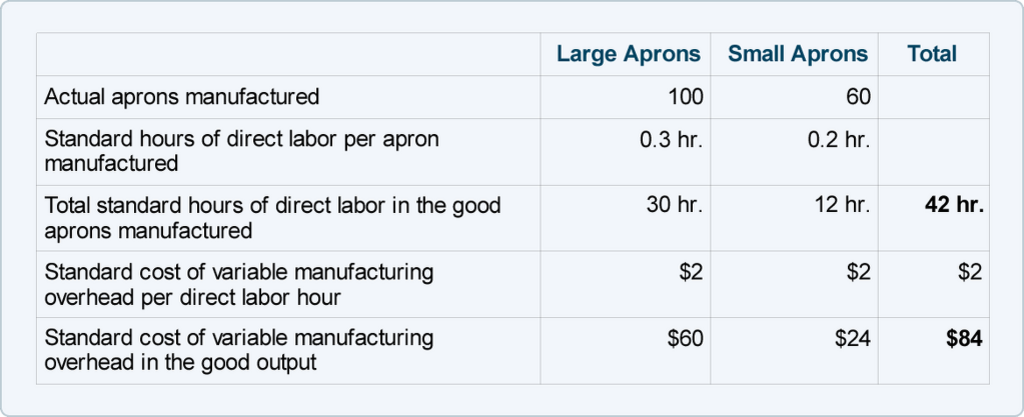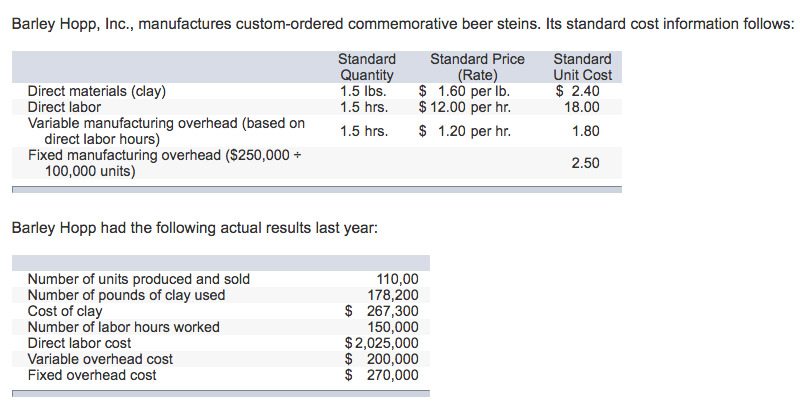
This is a cost that is not directly related to output; it is a general time-related cost. Specifically, fixed overhead variance is defined as the difference between Standard Cost and fixed overhead allowed for the actual output achieved and the actual fixed overhead cost incurred. Fixed Overhead Capacity Variance calculates the variation in absorbed fixed production overheads attributable to the change in the number of manufacturing hours which tax form should i use (i.e. labor hours or machine hours) as compared to the budget. Changes in market demand can lead to fluctuations in production volume, thereby affecting the variance. Production inefficiencies, such as machine breakdowns or labor disputes, can also result in lower output than planned. Additionally, strategic decisions, like the introduction of new products or changes in product mix, can alter production volumes and impact the variance.
What are the formulas to calculate the overhead variances?
Fixed Manufacturing Overhead Volume Variance quantifies the difference between budgeted and absorbed fixed production overheads. Interpreting volume variance results requires a nuanced approach, as these figures can be indicative of broader operational dynamics. When a company observes a variance from its expected fixed overhead, it’s not merely looking at a discrepancy in numbers but also at underlying factors that may include shifts in market conditions or internal process changes.
What is your current financial priority?
The fixed overhead volume variance is also one of the main standard costing variances, and is the difference between the standard fixed overhead allocated to production and the budgeted fixed overhead. An unfavorable fixed overhead volume variance occurs when the fixed overhead applied to good units produced falls short of the total budged fixed overhead for the period. If the actual production volume is higher than the budgeted production, the fixed overhead volume variance is favorable. On the other hand, if the actual production volume is lower than the budgeted one, the variance is unfavorable. The calculation of the sub-variances also doesn’t provide a meaningful analysis of fixed production overheads. For example, if the workforce utilized fewer manufacturing hours during a period than the standard, it is hard to imagine a significant benefit of calculating a favorable fixed overhead efficiency variance.
Favorable and Unfavorable FFOH Volume Variance

Fixed overhead volume variance occurs when the actual production volume differs from the budgeted production. In this way, it measures whether or not the fixed production resources have been efficiently utilized. Being fixed within a certain range of activity, fixed overhead costs are relatively easy to predict. Because of the simplicity of prediction, some companies create a fixed overhead allocation rate that they continue to use throughout the year.
Fixed Manufacturing Overhead Variance Analysis
By integrating this variance into financial reports, analysts can provide a comprehensive overview of how effectively a company is leveraging its production capacity. Fixed overhead efficiency variance is the difference between the number of hours that actual production should have taken, and the number of hours actually taken (that is, worked) multiplied by the standard absorption rate per hour. Fixed Overhead Efficiency Variance calculates the variation in absorbed fixed production overheads attributable to the change in the manufacturing efficiency during a period (i.e. manufacturing hours being higher or lower than standard ). The fixed overhead costs that are a part of this variance are usually comprised of only those fixed costs incurred in the production process. Examples of fixed overhead costs are factory rent, equipment depreciation, the salaries of production supervisors and support staff, the insurance on production facilities, and utilities.
How to Compute Various Overhead Cost Variances FAQs
- Budget or spending variance is the difference between the budget and the actual cost for the actual hours of operation.
- Explore the significance of fixed overhead volume variance in shaping financial strategies and enhancing business planning efficiency.
- The analysis of this variance facilitates a deeper understanding of the fixed costs structure and its behavior in different production scenarios.
- The standard cost per unit of $113.60 calculated previously is used to determine cost of goods sold – at standard amount.
To operate a standard costing system and allocate fixed overhead, the business must first decide on the basis of allocation. Various methods can be used to allocate the fixed overhead including for example, the number of direct labor hours used in production or the number of machine hours used. We begin by determining the fixed manufacturing overhead applied to (or absorbed by) the good output produced in the year 2023. Recall that we apply the overhead costs to the aprons by using the standard amount of direct labor hours. A simple way to assign or allocate the fixed costs is to base it on things such as direct labor hours, machine hours, or pounds of direct material. Accountants realize that this is simplistic; they know that overhead costs are caused by many different factors.
For instance, a positive variance often prompts a review of market engagement strategies, as it may suggest that the company’s products are not meeting market demand as anticipated. Controlling overhead costs is more difficult and complex than controlling direct materials and direct labor costs. In the standard costing system, the fixed overhead is posted at the standard cost of 11,960, represented by the debit to the work in process inventory account. Initially the actual fixed overhead expense (rent etc) would have been posted to the expense account with the usual entry of debit expense, credit accounts payable (not shown). The journal above now allocates some of this expense (11,000) to production, this is represented by the credit entry to the expense account.
Fixed overhead represents all items of expenditure which are more or less remain constant irrespective of the level of output or the number of hours worked. An income statement that includes variances is very useful for managers to see how deviations from budgeted amounts impact gross profit and net income. These insights help in planning by addressing reasons for unfavorable variances and continuing with line items that are favorable. Strategic planning also involves considering the workforce implications of volume variance. This variance arises due to the difference in the number of working days when the actual number of working days is greater than standard working days. He has worked as an accountant and consultant for more than 25 years and has built financial models for all types of industries.
